Sleep is one of the most important factors in your health and performance, yet most of us have no objective way of measuring it. That’s where sleep trackers come in.
Unfortunately, not all sleep trackers are created equal. Some devices offer highly accurate data with actionable insights, while others are little more than expensive gimmicks.
In this article, I’ll break down the best sleep trackers based on scientific research, validation studies, their underlying technology and my personal experience testing them.
| Sleep Tracker | My Ranking | Key Features | Price |
|---|---|---|---|
| WHOOP | Best overall | Multiple sensors, actionable sleep insights, sleep coach. | $$ |
| Ultrahuman Ring Air | Most convenient | Small form factor, advanced biometrics, long battery life. | $$ |
| Muse S Headband | Most accurate | EEG-based sleep tracking, meditation support. | $$$ |
| Eight Sleep Pod 4 | Best non-wearable | Temperature control, smart bed tracking. | $$$$ |
| Apple Watch Series 10 | Best smartwatch | Health integration, FDA-approved HR/ECG. | $$$ |
At the end of the article, I’ve also listed two sleep trackers I don’t recommend (including one popular option from Fitbit) due to inaccurate data, a lack of reliability, or the absence of key features that are necessary for extracting useful data from the device.
Best Overall: WHOOP Health and Recovery Tracker
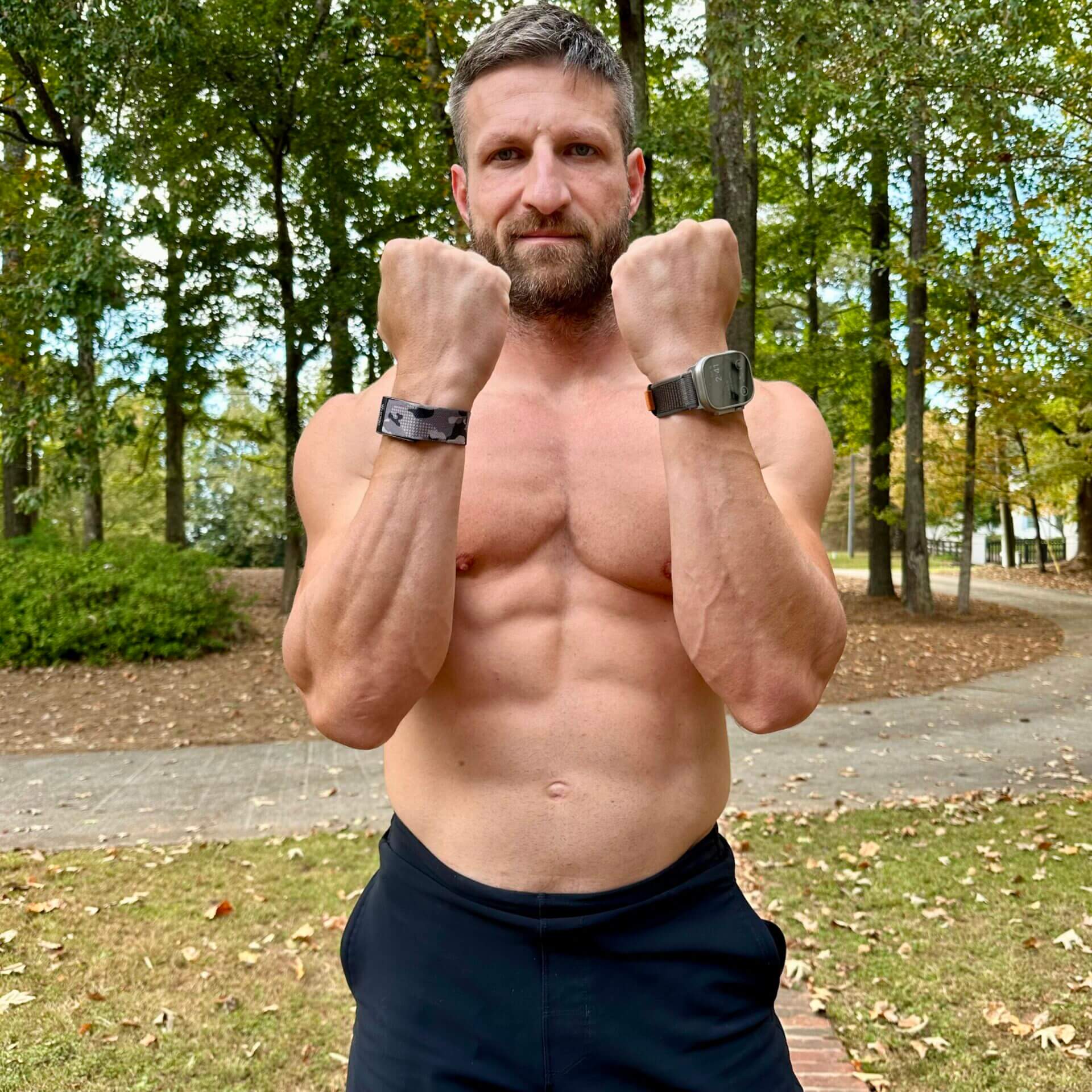
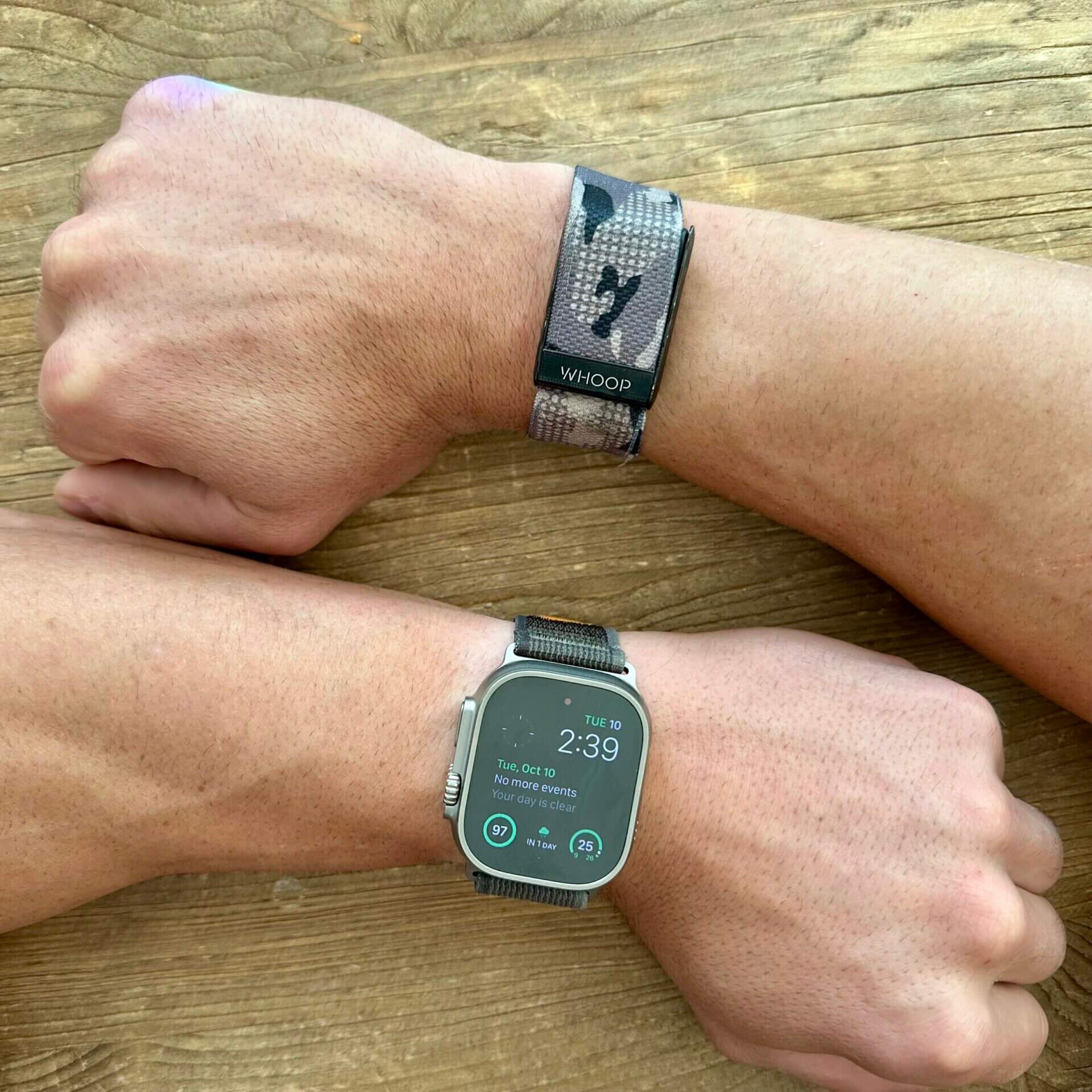
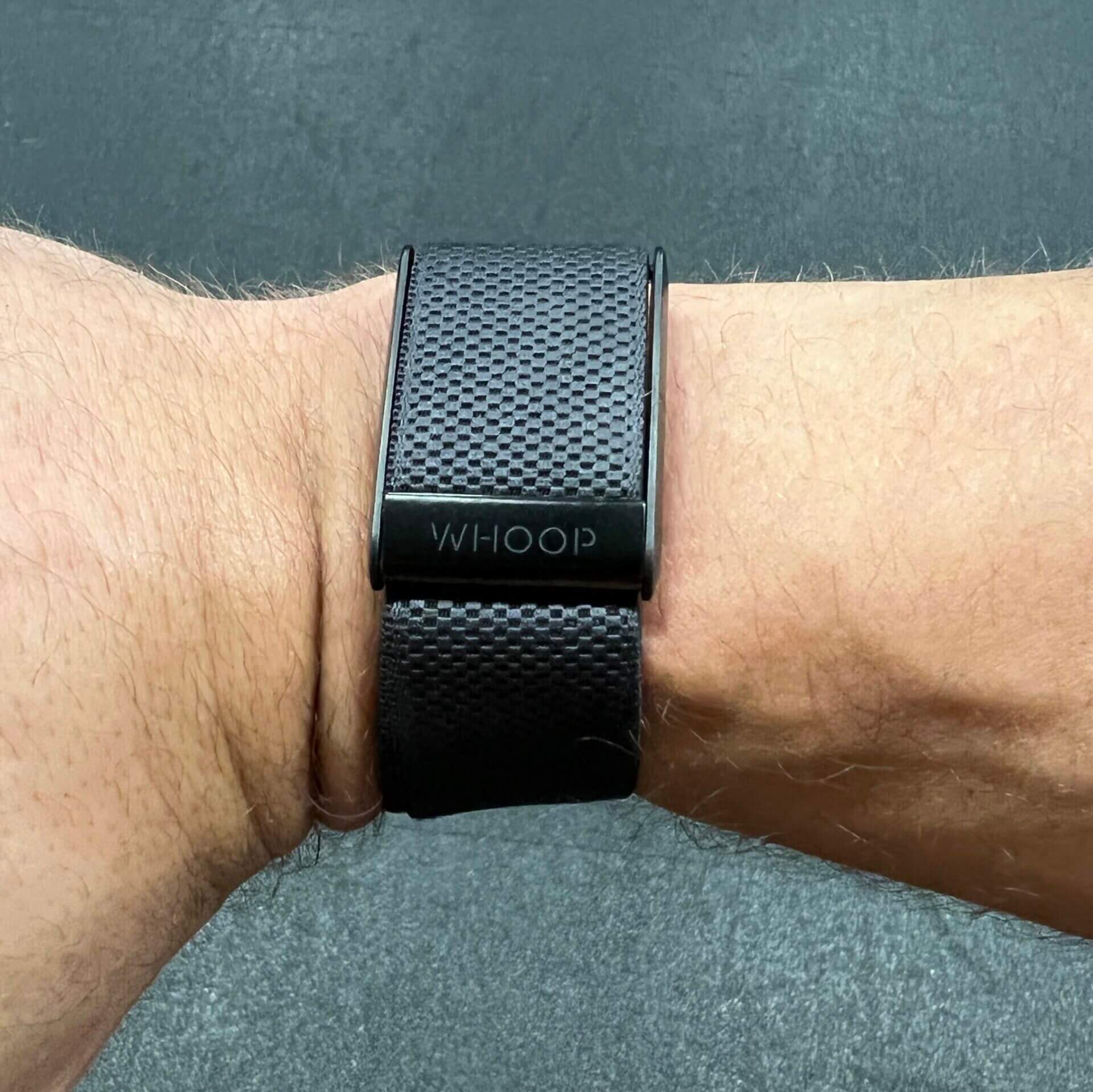

Pros
- Multiple sensors, paired with an advanced machine learning algorithm.
- Developed by data scientists and validated with pro athletes.
- Slick design and comfortable to wear 24/7.
- Actionable data that improves your health and well-being.
- Five-day battery life.
Cons
- Requires a monthly subscription.
- If you also wear a smartwatch, it means wearing devices on both of your arms.
- It constantly exposes you to EMFs due to the lack of airplane mode.
In addition to being one of the most accurate fitness tracking devices on the market today, WHOOP is also the most advanced and most reliable wrist-worn sleep tracker, thanks to the inclusion of four different sensors that sample data 100 times per second. These sensors include:
- Optical heart rate sensor with pulse oximetry capability, which improves the capture of heart rate data during sleep.
- A 3D gyroscope to detect movement and respiratory rate. Both of these biometrics can be used to identify sleep stages. For example, you normally don’t move during deep sleep and your respiratory rate is lower than during REM or light sleep.
- Skin conductance to detect changes in electrodermal activity, which changes when you fall asleep or when you’re stressed.
- Ambient temperature monitor to detect changes in skin temperature. Your skin temperature drops when you fall asleep and changes throughout the night, based on your sleep cycle.
Combined with a machine learning algorithm that constantly learns from the anonymous data provided by other WHOOP users, these sensors make for an extremely powerful device that is able to provide you with accurate data and actionable insights for improving your sleep.
WHOOP also helps you correlate your lifestyle choices (such as alcohol consumption, meal timing and workout intensity) with changes to your sleep quality, features a sleep coach that recommends the ideal bed and wake time for optimal sleep performance based on your individual data and health metrics, and has a smart alarm that can wake you up silently using gentle vibrations.
You can learn more about these features and how they work in the sleep tracking section of my in-depth WHOOP review.
Use the link above to get a free month of WHOOP (no promo code required).
Most Convenient: Ultrahuman Ring Air
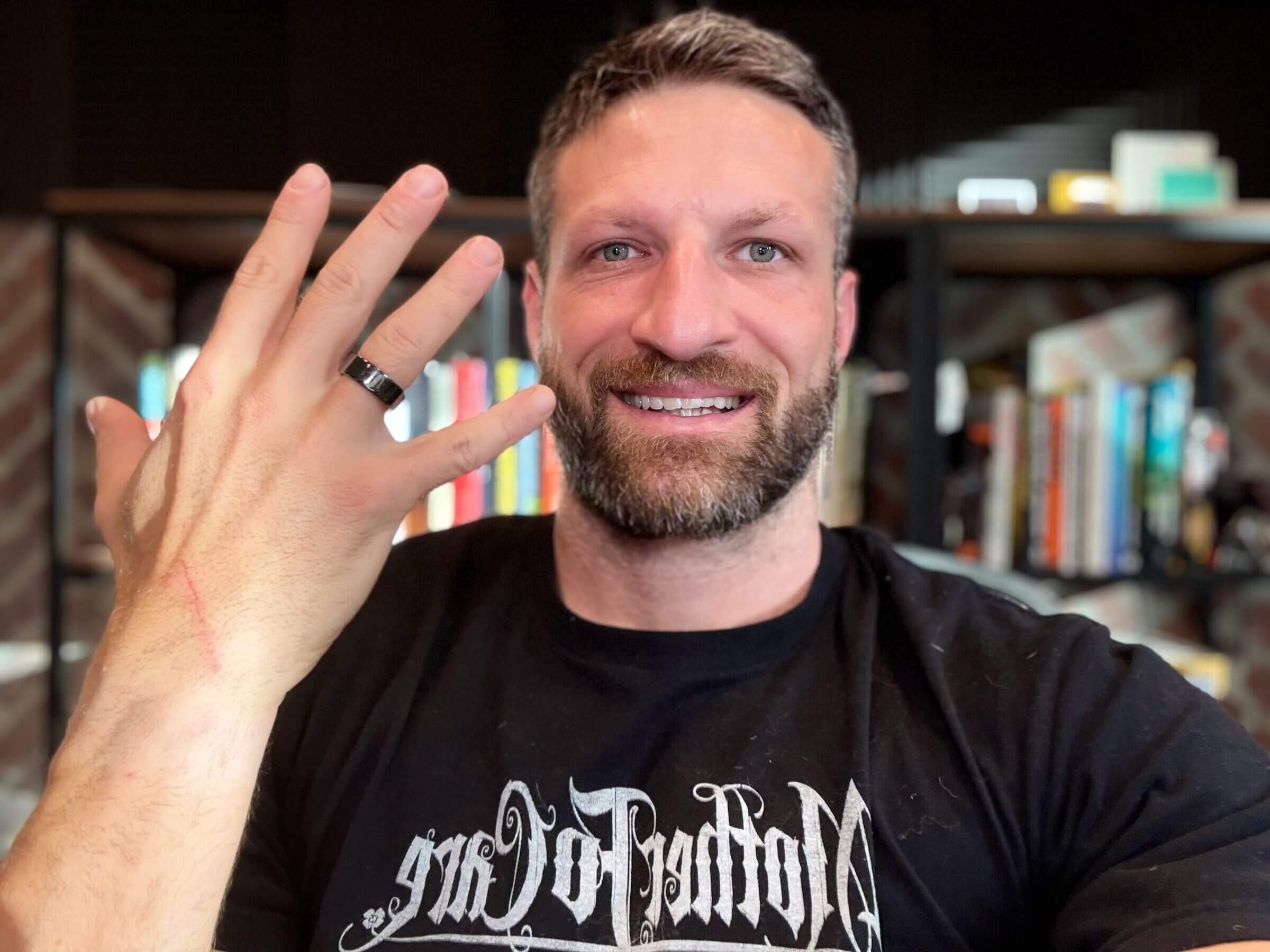
Pros
- Packs advanced sensors in an incredibly small form factor.
- Comfortable and easy to wear.
- Long battery life.
- Tracks a broad range of key biometrics.
- Airplane mode reduces EMF exposure during sleep.
Cons
- Lack of validation studies.
- Some rings are prone to battery issues and may require warranty replacement.
The Ultrahuman Ring Air has sensors for measuring heart rate, body temperature, respiratory rate, skin temperature, heart rate variability, blood oxygen saturation, movement and other biometrics several times per second.
Most wearable sleep trackers are designed to be worn on the wrist, which can be inconvenient if you’re someone who regularly wears a watch or wrist-worn jewelry. The Ultrahuman Ring Air is an appealing option for these use cases, thanks to its very small form factor.
One knock against Ultrahuman is a lack of validation from studies involving real-world data from a combination of regular users and elite athletes. As a result, it’s difficult to tell how accurate the device really is in comparison to polysomnography (PSG), which is considered the gold standard of sleep tracking.
However, the science team at Ultrahuman conducted a pilot study comparing the Ring Air with the Apple Watch and concluded that, “Performance of the Ultrahuman Ring Air is within the ranges of other wrist and finger-based sleep trackers.”
It’s worth noting that the study only examined total sleep time, wake-ups and total time awake, ignoring the amount of time participants spent in the various stages of sleep, including deep and REM sleep.
To learn more about this sleep tracker and its capabilities, check out my in-depth comparison of the Ultrahuman Ring Air and the Oura Ring Gen 4.
If you want to give the Ultrahuman ring a try, make sure to use discount code MIK to get 10% off the MSRP.
Note: Check out my detailed WHOOP vs. Ultrahuman comparison article if you’re still on the fence about which of these two devices to try.
Most Accurate: Muse S Brain-Sensing Headband

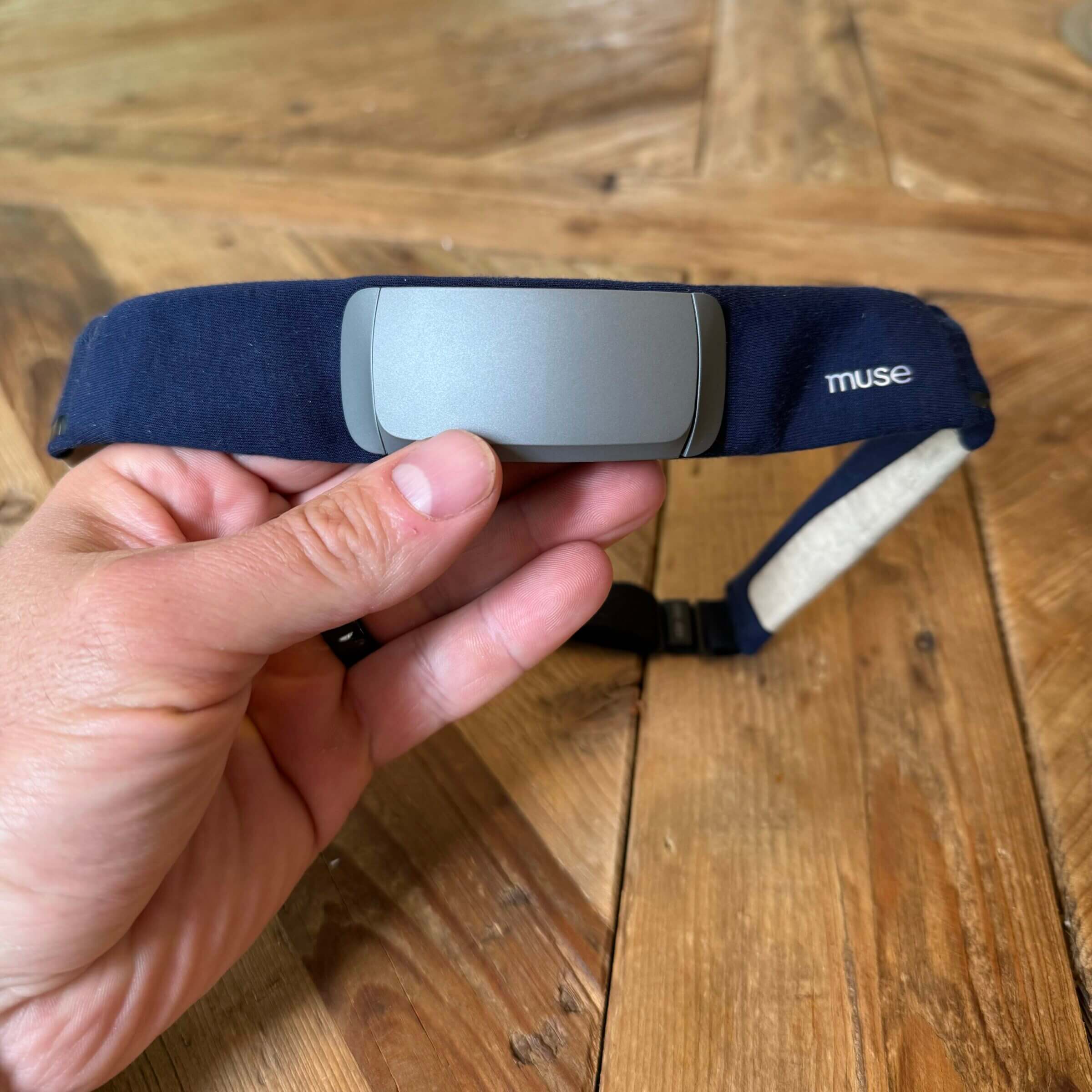
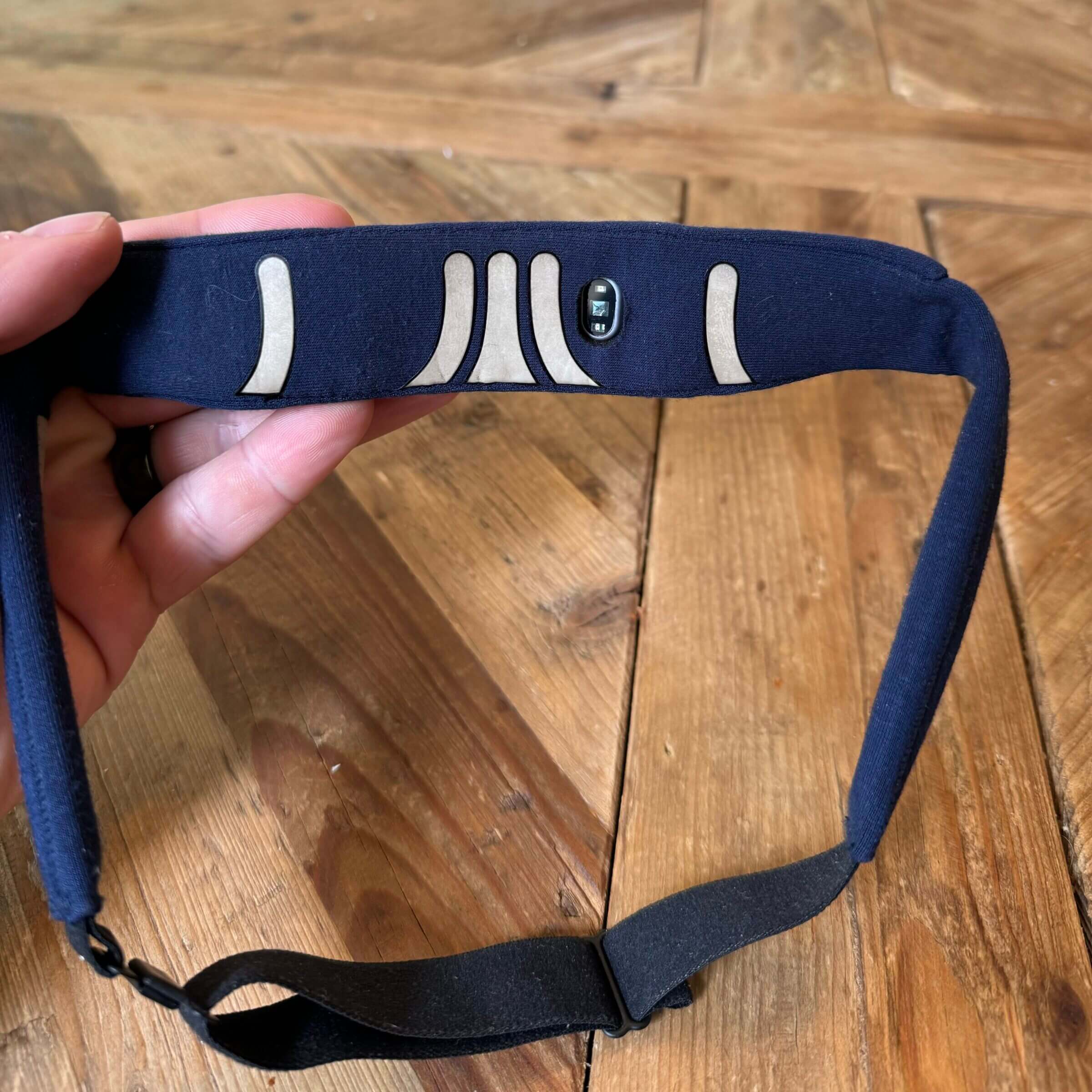
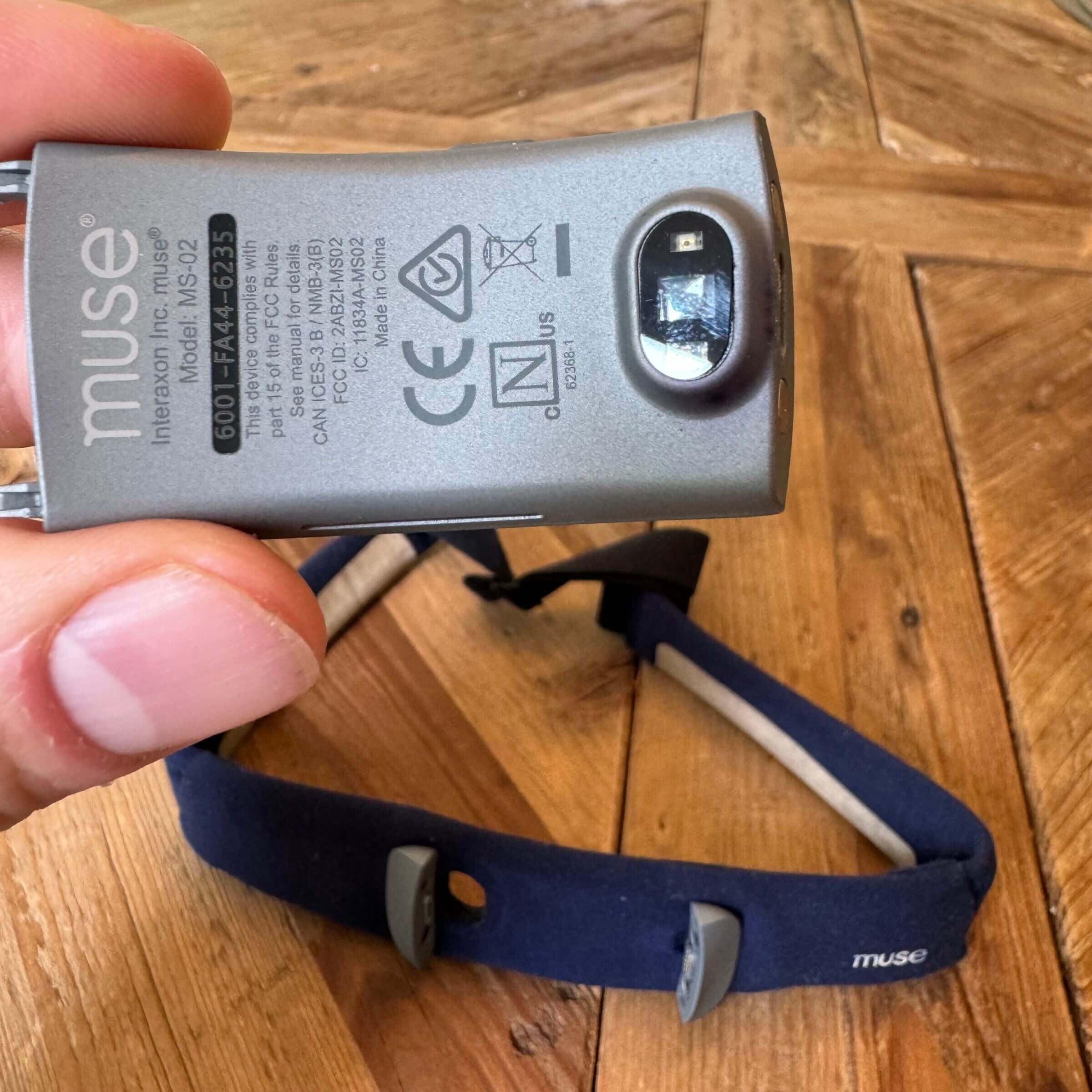
Pros
- Uses EEG technology to monitor brain waves.
- 10-hour battery life.
- Detailed sleep stage and sleep intensity reports.
- Validated accuracy based on several studies.
- Can also be used for meditation and biofeedback.
Cons
- Requires an active Bluetooth connection.
- Not as comfortable as a wrist-worn device.
Muse S is a brain-sensing headband that I’ve been using to get real-time feedback on my brain activity during meditation sessions. However, it’s also an incredibly accurate sleep tracker because it uses electroencephalography (EEG) technology — in combination with an optical heart rate sensor and a gyroscope — to monitor your brain waves in order to identify what stage of sleep you’re in.
Your brain waves change depending on sleep phase, so EEG is arguably the most accurate sleep tracking technology available to consumers.
In addition to reporting your total time asleep and the time you spend in the various stages of sleep, the Muse app records your sleep position and heart rate. All of this data is packaged up into a sleep quality score that gets reported every morning.
The biggest downside to Muse S is that it streams your sleep data to your phone via Bluetooth, instead of storing everything locally and then synchronizing it with the phone. This means you’re constantly exposed to Bluetooth radiation while sleeping.
Additionally, it’s worth noting that Muse S is not quite as comfortable as wrist-worn devices (or the Ultrahuman Ring Air). Don’t get me wrong: Muse S is as comfortable as a headband can be. But I generally prefer having a device strapped to my wrist rather than my head.
If you want to give Muse S a try, you can use the link below. Make sure you use code MKUMMER to get 10% off your purchase.
To learn more about Muse S and how I use it for both meditation and sleep tracking, check out my in-depth Muse S review.
Best Non-Wearable Option: Eight Sleep Pod 4 Bed Cooling System

The only non-wearable sleep tracking device that I’ve found to be relatively accurate and reliable is Eight Sleep’s Pod 4, which is a water-based, temperature-control smart mattress that has a series of built-in sensors called “the Active Grid.”
I’ve been using Eight Sleep to track my sleep for the past few years. Based on the comparison data I’ve collected, the Pod system’s tracking capability is more or less in-line with WHOOP and the Ultrahuman Ring Air.

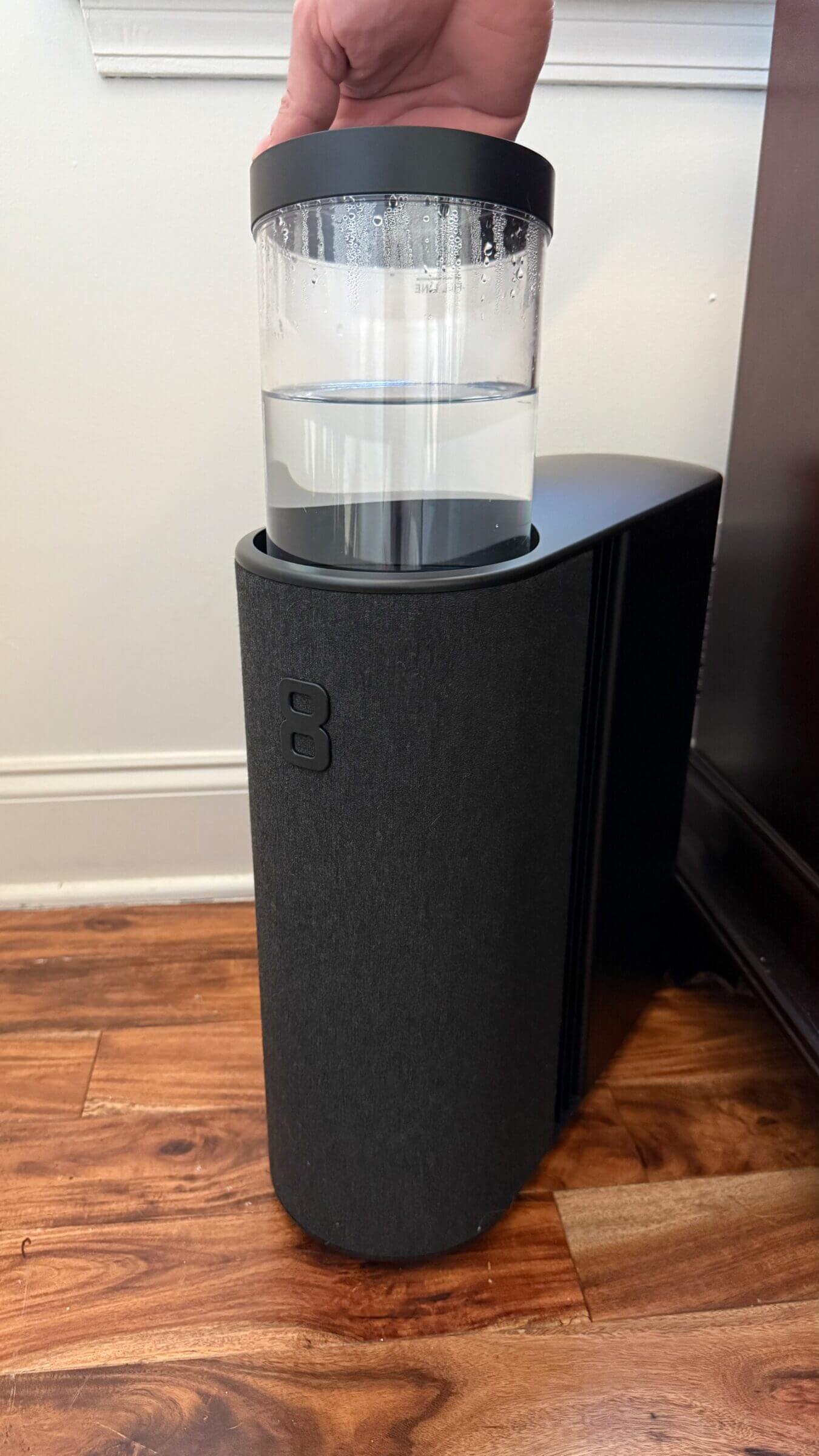


More specifically, I’ve found that it’s incredibly accurate at measuring heart rate, heart rate variability, sleep onset and sleep disturbances (i.e., wake-ups). It’s also fairly accurate at measuring deep and REM sleep, though I’ve seen some variance in that data when compared to other devices.
Of course, the big advantage is that you don’t need to wear a tracker on your body. Additionally, Eight Sleep’s temperature control system gives you the tools to not only measure but actively improve your sleep.
You can learn more about the Pod system in my in-depth Eight Sleep review.
If you want to give it a try, you can use the link below and enter promo code KUMMER at checkout to get $100 to $200 off (depending on which model you purchase).
Best Smartwatch for Sleep Tracking: Apple Watch Series 10
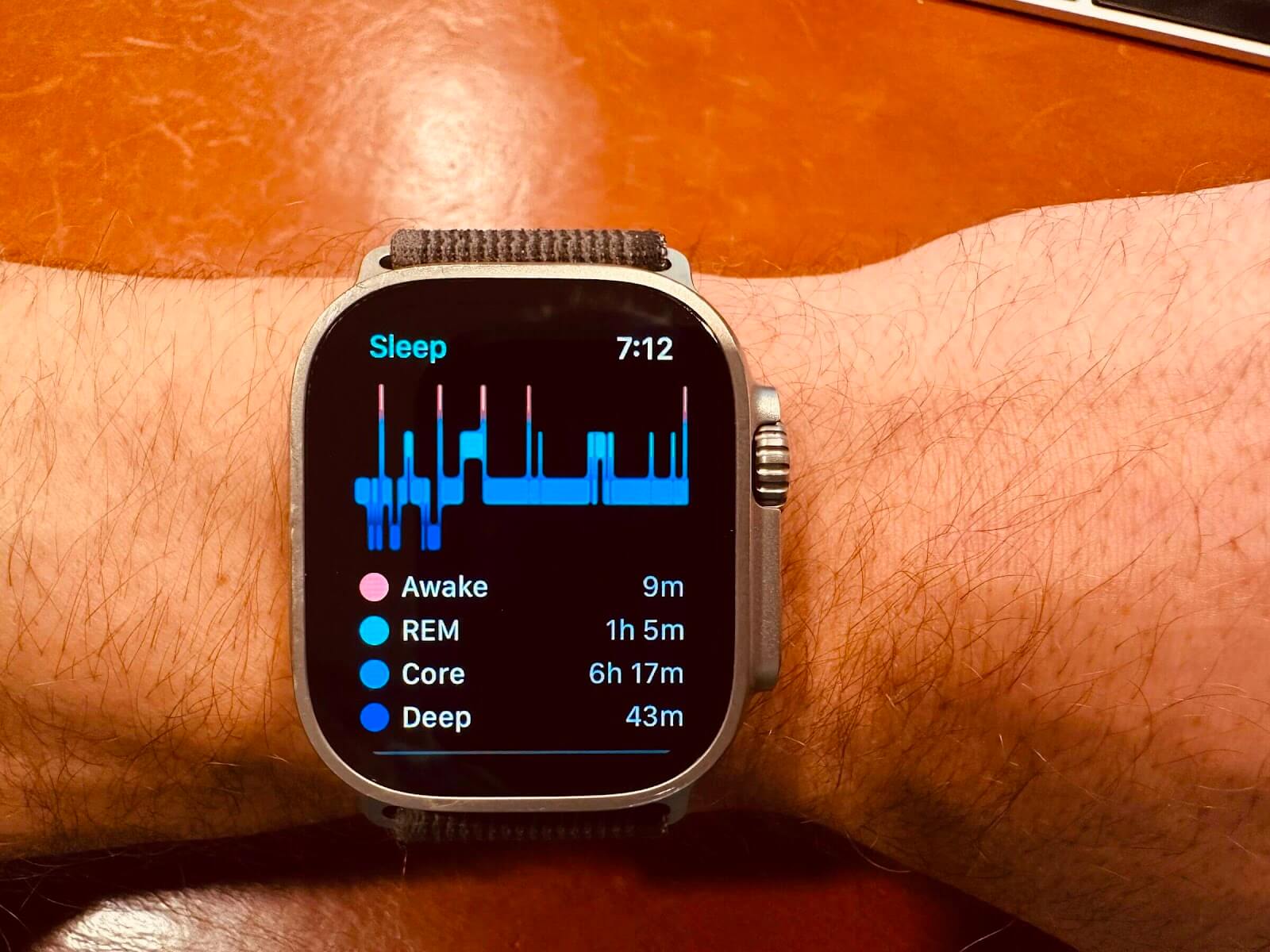
Considering that the Apple Watch’s heart rate sensor and ECG feature are both FDA-approved, and are incredibly accurate according to third-party testing, you would expect the device’s sleep tracking to be at least fairly accurate.
However, the sleep data reported by my Apple Watch Ultra (running watchOS 9 at the time) never matched the data reported by my other (more technologically-advanced) sleep trackers, including WHOOP 4.
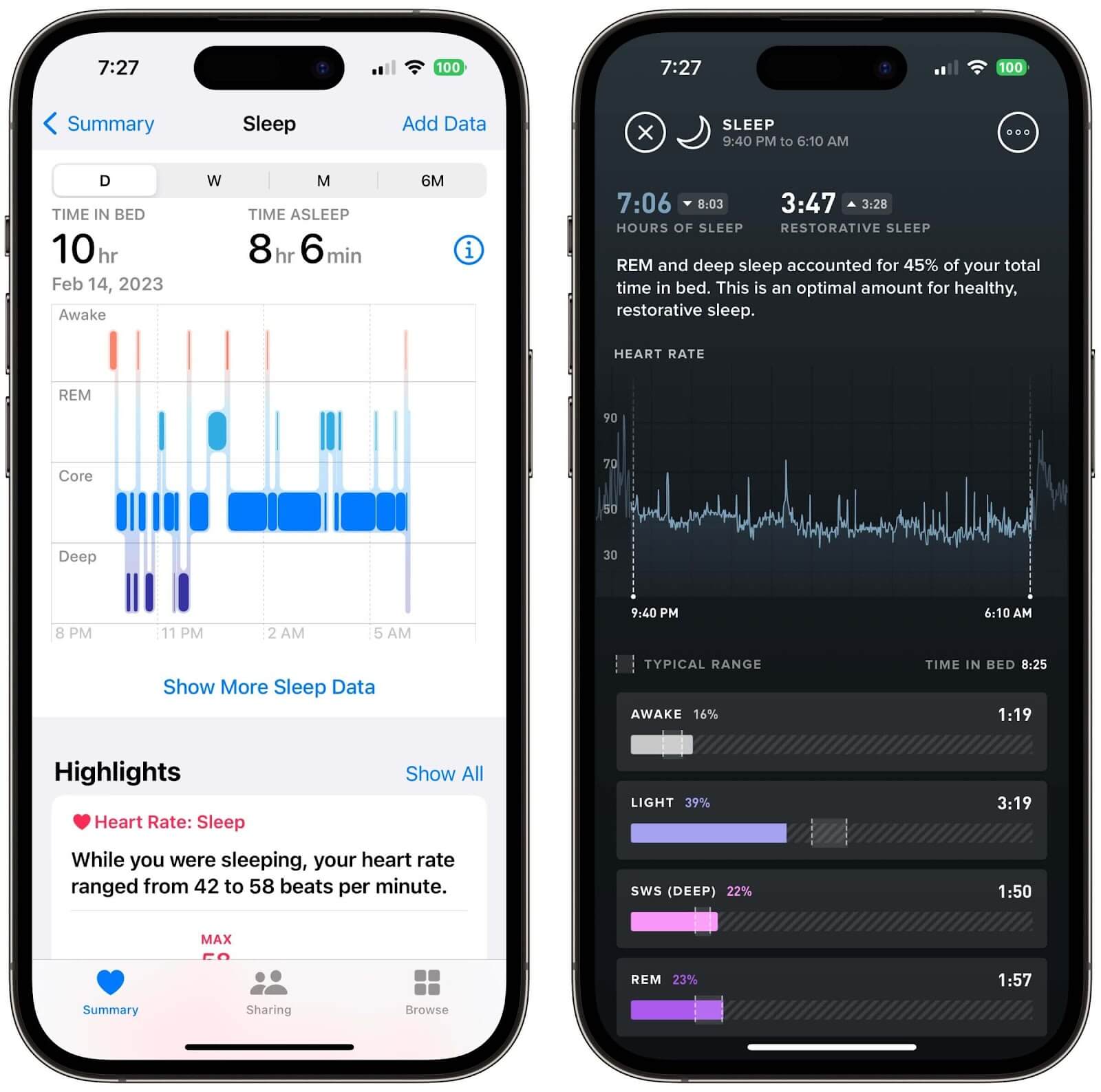
| Apple Watch | WHOOP 4.0 | |
|---|---|---|
| Total Sleep | 8:06 | 7:06 |
| Light Sleep | 6:16 | 3:19 |
| Deep Sleep | 0:43 | 1:50 |
| REM Sleep | 1:05 | 1:57 |
For example, my Apple Health data over a 30-day period said that I spent an average of 0:39 in deep sleep and 1:34 in REM sleep. Those are very low numbers, and, just based on how I feel every morning (both physically and mentally), I think the Apple Watch underreports deep sleep.
I’m not sure if that’s because of the relatively slow HR sampling frequency (every few minutes), the lack of additional sensors, or something that I do (e.g., a lack of arm movement or my resting heart rate).
But I’m also aware of other users, such as this YouTube creator, who claim the Apple Watch has been reliable in tracking sleep and the various stages of sleep. So there is a chance that the Apple Watch works reliably for some but not all users.
If you’d like to learn more about the sleep tracking capabilities of the latest-generation Apple Watch, you can check out my in-depth WHOOP vs Apple Watch article, which goes into more detail about the device’s sensors, how it attempts to track sleep, and other important details.
Apple Watch Series 10 on Amazon
Sleep Trackers I Don’t Recommend
These devices might accurately track your heart rate, but I doubt — given their technological limitations — that they can reliably track your sleep (and your stages of sleep in particular).
The sleep trackers I don’t recommend include:
| Sleep Tracker | Why It’s Not Recommended |
|---|---|
| Fitbit Sense | Inaccurate sleep stage tracking, unreliable HR data. |
| Withings Sleep | Questionable accuracy, limited validation studies. |
Fitbit Sense
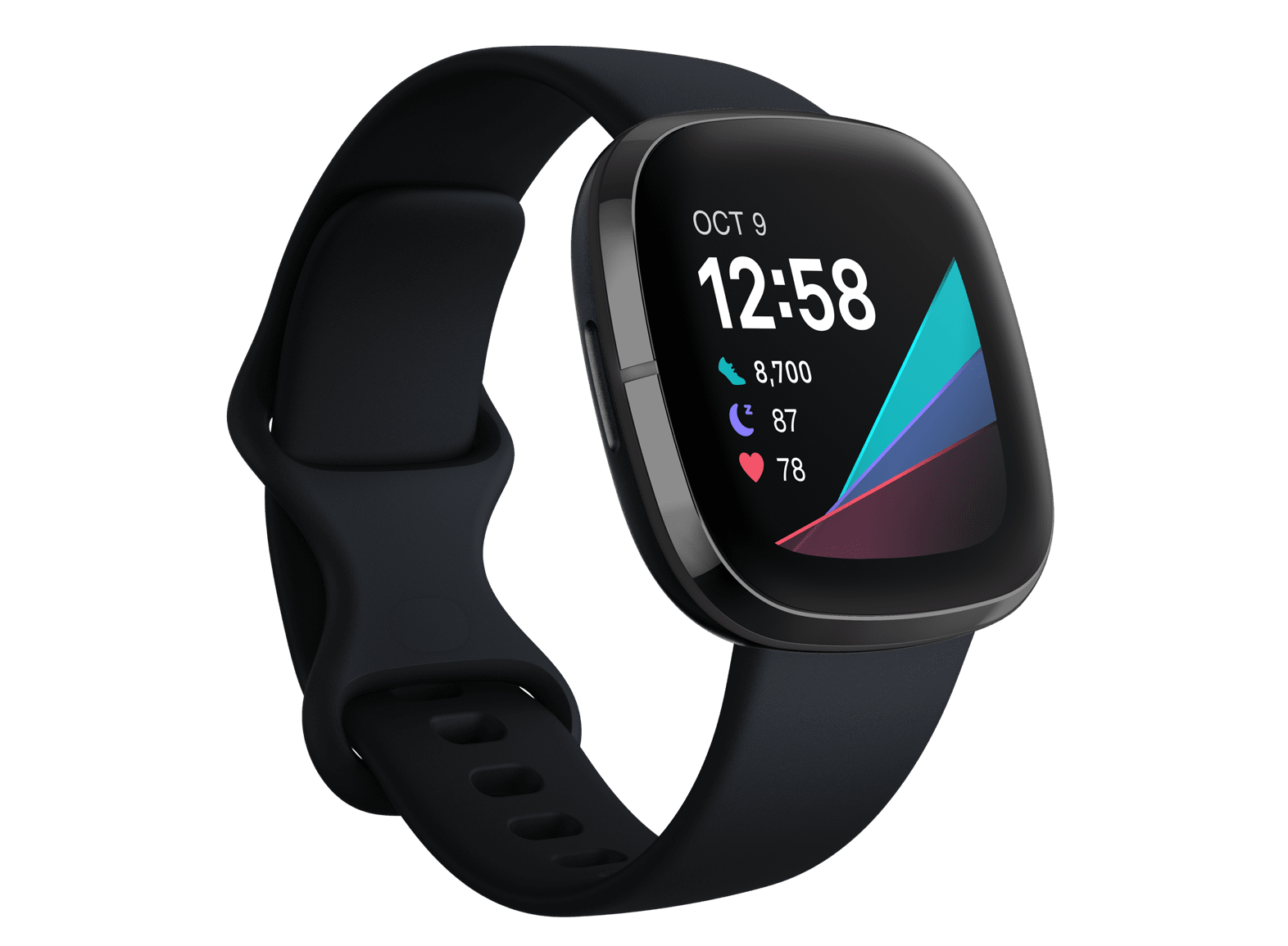
Fitbit offers a range of smartwatches and fitness straps that the company claims can accurately track sleep. Their flagship model is the Fitbit Sense, which offers sleep tracking via a combination of an optical heart rate tracker, a MEMS three-axis accelerometer, and a skin conductance sensor.
Considering that the Fitbit Sense has all the necessary sensors to offer relatively accurate sleep tracking capabilities, I was disappointed to discover that it fails to effectively leverage that technology.
In my tests, neither the total time asleep nor the sleep stages data was accurate and comparable to WHOOP and Eight Sleep (as I discussed in my Fitbit vs. WHOOP comparison article).
I’ve even heard some reports of the Fitbit Versa incorrectly recording HR data while it wasn’t even being worn.
If the software algorithm in the Fitbit Sense can’t even tell the difference between a real pulse and light reflected by a countertop (which may have been the case in the example linked above), I have no trust in its ability to distinguish between the various stages of sleep.
Withings Sleep
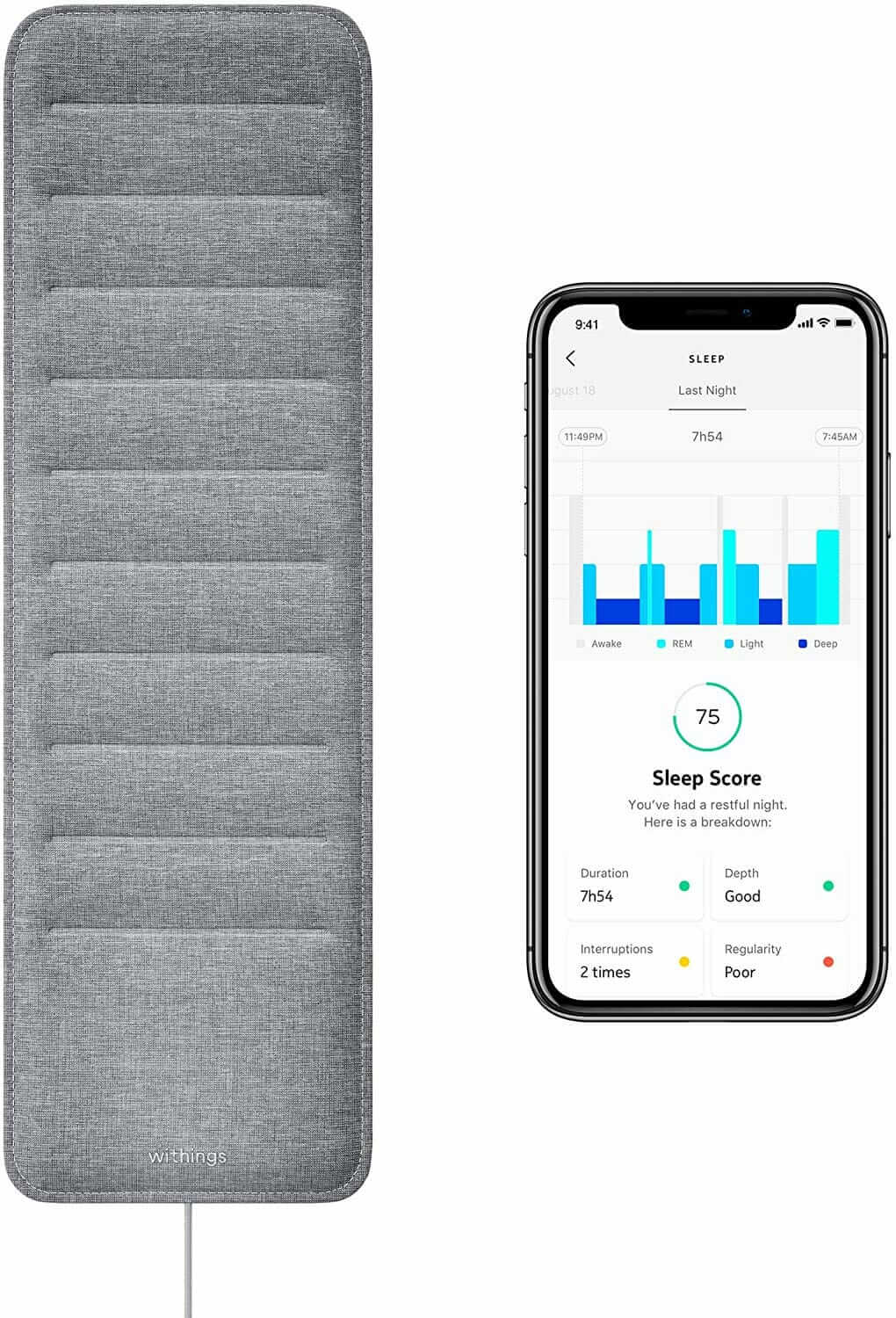
Withings Sleep is an under-the-mattress device that can supposedly track your overall sleep, sleep stages, respiratory rate, heart rate and snoring.
The idea behind this product is that your beating heart, breathing or snoring all cause different movement patterns that the sensor can pick up.
As I mentioned before, I’m skeptical of whether a $129 device can accurately pick up and correctly identify those patterns, especially if several of them happen concurrently.
Final Thoughts: Are Sleep Trackers Accurate Enough to Be Worth It?
Accurately tracking sleep is difficult, because most of the consumer-grade devices we have access to can’t measure brain waves, which are the only direct indication of sleep.
Instead, wearable and contactless sleep monitors have to use proxies like movement, heart rate, skin conductance, ambient temperature and respiratory rate to make an educated guess as to whether a person is truly sleeping or not.
Besides getting quality data from as many different biometric sensors as possible, it’s up to the underlying software algorithm to make sense of the data and report back to the user.
The algorithm is where I think most sleep trackers fall short. It takes validation studies and large amounts of data for algorithms to reliably predict if a subject is sleeping and in what stage of sleep the person is in.
Based on everything I’ve seen, there are only a handful of sleep trackers out there that have both the underlying technology and algorithm to accurately track and help you improve your sleep.
All the other trackers are gimmicks that might over-report or under-report your sleep, and are thus virtually useless if your goal is to introduce meaningful lifestyle changes that result in better health and performance.
However, it’s vital to keep in mind that no consumer-grade sleep tracker is perfect. To accurately measure your sleep and how much time you spend in each of the stages of sleep you need a gold-standard sleep study conducted in a lab using polysomnography (PSG).
At the same time, the best sleep trackers can still provide valuable insights for optimizing your sleep habits.

Michael Kummer is a healthy living enthusiast and CrossFit athlete whose goal is to help people achieve optimal health by bridging the gap between ancestral living and the demands of modern society.
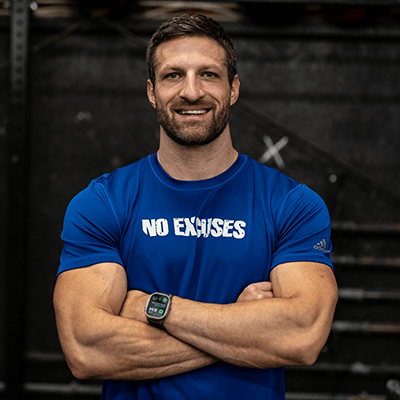
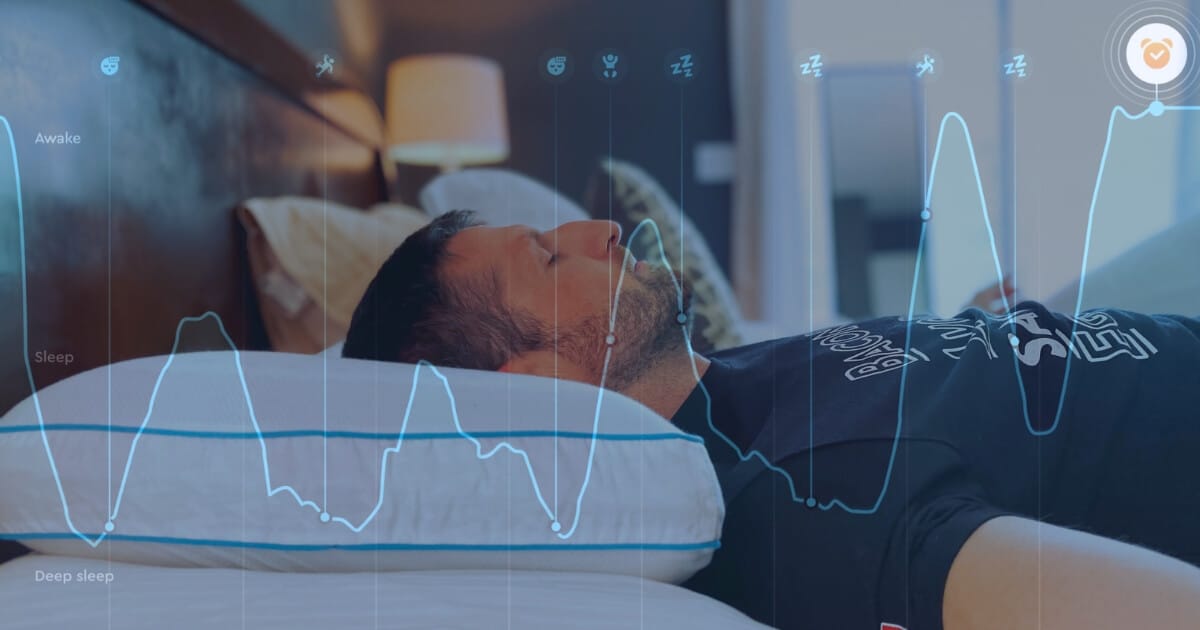
Fabulous article. I read the entire article and will seriously consider purchasing the WHOOP, Oura ring 4 and Muse S soon.
I’m of the Samsung / Android branch of smart watch technology in opposition to Apple watches. How would you compare the latest / greatest Samsung watch with the equivalent in the Apple world?
Keep being an inspiration for the world!
Hey Jean-Pierre,
Unfortunately, I have zero experience with Samsung/Android devices and can’t compare them to Apple devices. That said, I actually stopped wearing my Apple Watch Ultra and, instead, went back to an analog watch :)
As for sleep tracking, check out the Ultrahuman ring — that’s the device I currently wear. See https://michaelkummer.com/ultrahuman-vs-oura-ring/ for more info.
Nice post, Michael, thank you for the info!
Do you have any info or review about CardioMood?
Unfortunately, I don’t. Never heard or tried CardioMood.
Very in depth article. Thank you for your time and effort on this. I’m hoping to get a suggestion on a device.
I’d like something that can accurately tell me when I’m falling asleep, how often I’m waking up, and what the duration of my times awake are.
Stages of sleep would be great but it looks like the tech isn’t quite there yet for very accurate and reliable data.
I have a rare sleep disorder and I’m trying to track my sleep patterns along with my medication titration/frequency/time taken and so on. I have to take the medication 2-3 times per night and I’m trying to figure out what the best pattern and amount is for me to have the most effect over the longest period of time. It would also help me track my data for reporting to my doctor on my progress.
Thanks for any guidance you may provide. I know you aren’t providing medical advice, but the features I’ve listed as well as their accuracy are all I’m interested in. With that being said, you seem like you’d be the best to ask on which to consider. Thanks again!
Hey Shanna,
I’d say WHOOP, Oura and Eight Sleep are all perfectly capable to detecting when you’re asleep or awake. So it boils down whether or not you want a wearable (WHOOP vs. Oura) or something integrated into your mattress.
Cheers,
Michael
Have been using an App for my iPhone called Sleeprate, in combination with a chest strap heart rate monitor (Polar H10) for years, with decent, somewhat reliable results. Sleeprate would report sleep stages based on HRV. The chest strap would provide best possible (continuous) heart rate data, so the HRV would be based on very accurate/reliable data. Unfortunately, the App no longer works (business not sustainable), so now I am on the lookout for an alternative. I am impressed with the Rise App, but still need some kind of reliable tracker. I don’t care about sleep stages – I just want sleep/wake times. I am not interested in an expensive subscription, like the Whoop or Oura (Whoop seems good, but is way too expensive). Any thoughts?
Hi Olaf,
if you don’t care about sleep stage tracking, pretty much any device will do, including a Fitbit or the Apple Watch.
Cheers,
Michael
Updated comment from Tim on Apple Watch. I found the SleepWatch app is much better / accurate than Sleep++ and much closer to Fitbit. Now you may say that Fitbit is no good and I’m not going to argue that technically or medically–just have used it for several years and it seems to be accurate IMO.
So I’m using Apple Watch with SleepWatch now most of the time. I like my Fitbit but Apple has much more functionality. Only area I didn’t like was sleep and now with SleepWatch I don’t have even that complaint anymore. Cheers.
These reviews always miss 2 things: durability and company support / reliability and integrity. My Biostrap battery lasted about 9 months and was not able to last long enough to monitor 7 hours of sleep. The company absolutely ignored requests for help and offered to sell me a new one. There are better alternatives from reliable manufacturers. This one was money down the drain.
Hey Alan!
I’m sorry to hear that! Battery performance naturally declines over time (in all products) but nine months doesn’t seem right. I’ve had my Biostrap for much longer and the battery is still good.
PS: Apologies for the late reply. Your comment got accidentally deleted by my anti-spam plugin and I just found out about it.
The ResMed S+ is still the BEST sleep monitor IMO (have not used a whoop yet.) The data and tracking has been the most accurate and easy to use. The soothing sounds it can play while tracking and adjusting to your breathing worked very well for me, along with the ability to wake you up when you go into light sleep (vs deep and rem) has helped me to wake up feeling more refreshed. Nothing sucks more than being woke up in the middle of REM. UNFORTUNATELY the product and app is apparently no longer being supported. I’ve tried several timed to update the app on my new iphone 13 with NO luck. It really sucks they didn’t take this product to the next level.
This is helpful. From my perspective, although my Fitbit charge 4 probably is far short of the other alternatives in this article, I have found for example that I wake up from a deep sleep when I am dreaming and it may be lucky but the time of my REM is coincidental with the time I have been having the dreams.
Also I have recently tried an Apple Watch with the Sleep++ app and that feels way too generous compared to the Fitbit. I have actually gone back to using my Fitbit for sleep instead of Apple Watch. My confidence in Fitbit may be totally misplaced but I just thought I would share. Thanks again for the information.
I just came across you article. I have an irregular heartbeat which causes me to have slow beats at times. My Fitbit measures all health metrics except hrv. The oura ring doesn’t work for me – giving hrv – the company told me it doesn’t work well for people like me.
Do you have information for those of us with irregular heart rate trying to track hrv at night?
Hi Allan,
WHOOP offers a special algorithm that can be enabled to provide accurate sleep and HRV tracking for people who have irregular heart beats. You’d have to reach out to their membership services team to get that algorithm enabled. Beyond that, I’m not aware of other devices that have the same capability.
PS: Apologies for the late reply. Your comment got accidentally deleted by my anti-spam plugin and I just found out about it.
Thanks for the review. It was informative and a little depressing as I really hoped there was a “perfect” solution available. I have a job that I can do from home with extreme flexibility, but my sleep is very chaotic and at the moment.
I go to bed when I’m tired (no matter what time of the day or night)
and stay in bed till I feel like I want to get up.
I’ve tried many monitoring approaches.
My best watch was the Intel Basic, till it was recalled :{
Hey John,
I think you’d be happy with the WHOOP strap. Was there anything you’ve read about it that you didn’t like?
Cheers,
Michael
Hi Michael,
I appreciate your thorough review and analysis of various sleep trackers. I have a question about your experience with Emfit QS. I recently bought a QS and have been testing it out. I also discovered that sometimes it would pick up my wife’s presence and affect sleep data when it was not bent over the side to limit surface coverage. I began verifying my sleep duration and “presence” by checking the HR and breathing rates. I check them (and the time) just after they populate in Live Monitoring mode before closing my eyes for the night. Then I also check to see if there is complete HR & breathing data during any “questionable” timeframes. Do you happen to remember whether you checked the raw data for the “kabob night” you mentioned to see if it captured phantom data when you weren’t in bed? Did it possible capture your wife’s data if she got in bed before you and woke up after? I ask because I am currently testing it out myself and would like to have a bit more context. Thanks so much!
Morgan
Hi Morgan,
I don’t think I looked at any raw data, just at the data the app reported. I’m guessing that the QS sensor either picked up our cat (that was in our bed before we went to bed) and/or my wife who stayed in bed longer than I did.
Cheers,
Michael
I own a Emfit QS for 3 years now and I think it offers good insights in recovery data (heart rate and hrv), but I’m somewhat sceptical that any device can accurately determine my sleep stages. And I agree with you that it only works well if I sleep alone in my bed.
Michael, Ihave worn an Oura ring for about 2 years, I never take it off except to charge it. I wear it through all kinds of workouts including free weight and barbell training, I play golf with it on my right ring finger, over 40 rounds per year, I also frequently go on long bike rides. I have not had any damage to the ring. It’s incredibly tough. Additionally, I just sent the Whoop 3. strap back as it was horribly innacurate in heart rate measurement when compared to either an Apple Watch 4, or Garmin Heart rate strap collected data. (I have dark skin), additionally, WHoop does not allw me enter my own scientifically calculated Max HR, or training zones, so I can’t trust their calory burn calculations. I did not find significant differences between the Sleep measurements from Whoop and Apple Watch with the AutoSleep app, after 3 weeks of comparison. IMHO, Whoop is hugely overpriced for what it delivers.
Hi Robin,
Thanks for sharing your experience with the Oura Ring, Apple Watch and WHOOP.
I can see how playing golf or riding a bike wouldn’t be an issue with Oura — or any ring for that matter. But considering how I’ve ripped up my hands and any ring I’ve ever worn during CrossFit, I don’t see the Oura ring would be a good choice — especially for serious barbell work, kipping/butterfly pull-ups or any other type of CrossFit workout.
Regarding the accuracy of WHOOP — or any other wrist-worn, optical HR sensor, it’s a matter of fit and, unfortunately, skin color. If the color of the skin color of your palms is lighter than that of your wrists on the outside (which is usually the case), then I can see how Oura might be the better fit for you.
I also think that the HR sensor of the Apple Watch is as accurate as WHOOP’s, but I seriously doubt it’s better considering the sensor tech both share. Plus, I think WHOOP has a leg up regarding real world data from its pool of users. I don’t think Apple collects any data to the same extent, considering their stance on privacy.
Regarding your scientifically calculated MAX HR — there shouldn’t be much to calculate. You have you test and find out what your MAX HR (or resting HR) is. You can also test your basal metabolic rate, which is what WHOOP will enable soon with their recently announced partnership with PNOE.
Regarding AutoSleep — there is just no way in technology hell that the Apple Watch is as accurate as WHOOP. I’m sure AutoSleep gets it right from time to time, but those are lucky shots.
Cheers,
Michael
(Sleep Cycle, the iPhone app)
I haven’t tried it but considering that the Apple Watch hardware itself isn’t a good enough sleep tracker, I don’t see how any app can provide accurate results.
Do you know something about “Sleep Cycle” ?